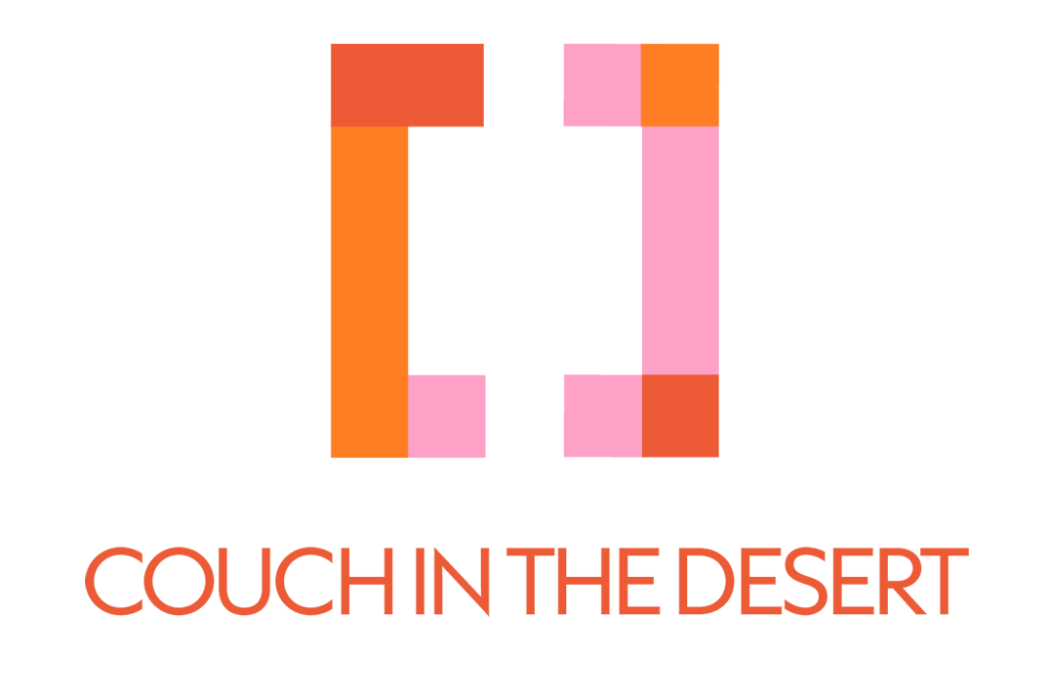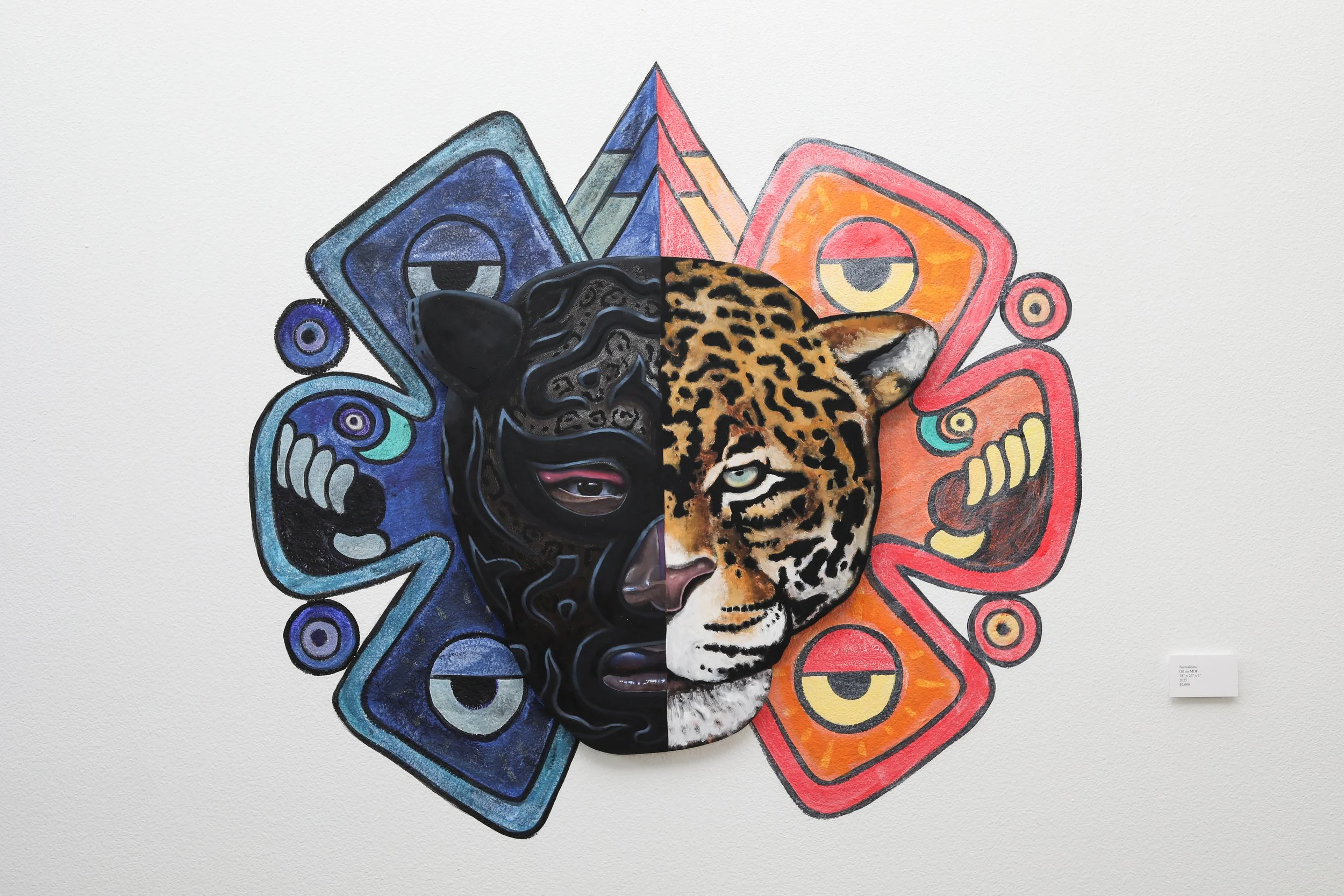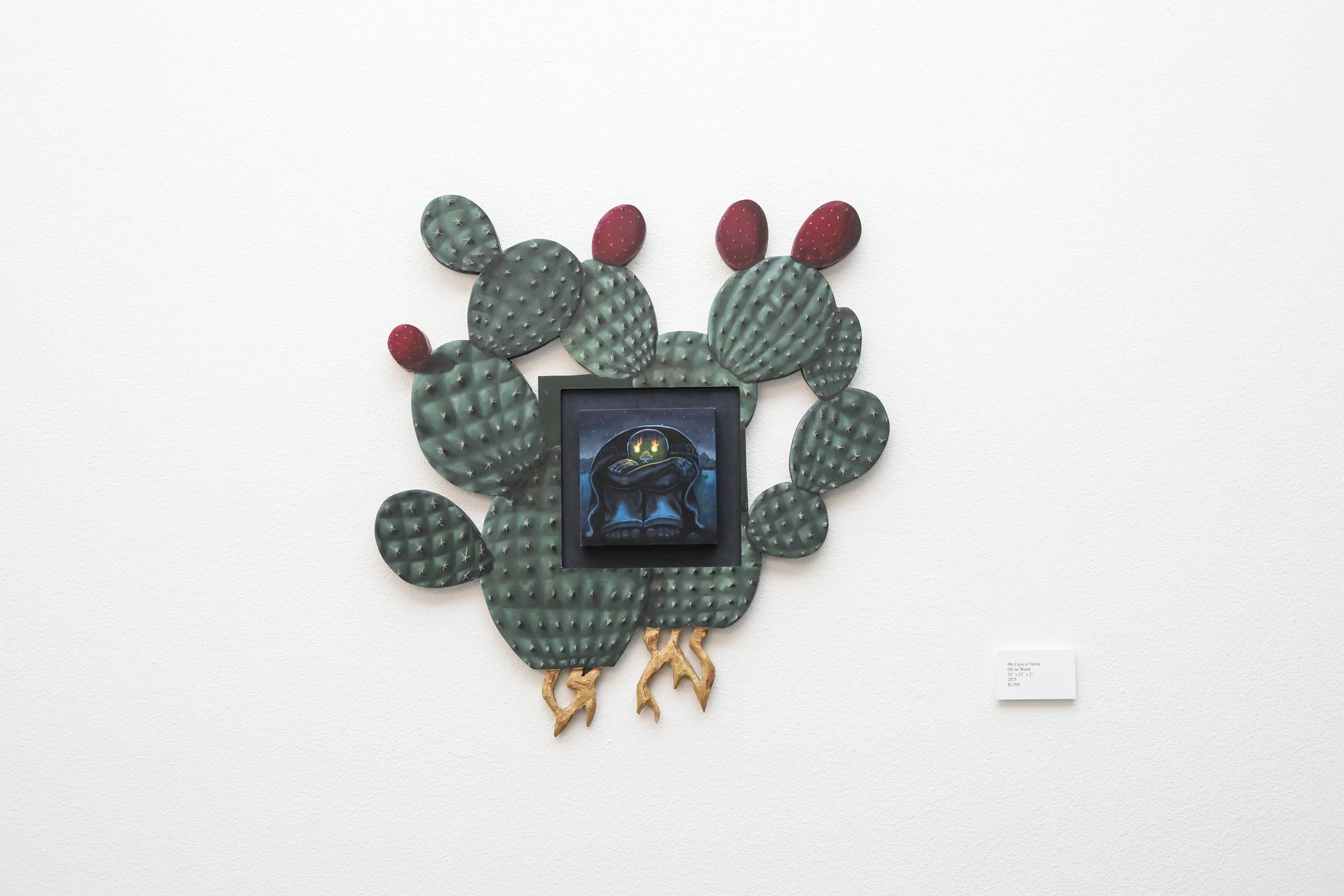Brian Martinez, Cosmic Chicano
Brian Martinez, Nahualismo, oil on MDF, 28” x 28” x 1”, 2025. Photo credit Anny Ayala Ortega.
Brian Martinez, Cosmic Chicano at Nuwu Art Gallery + Community Center
by D.K. Sole
Here is a small square painting from 2023 of a man wearing a luchador mask with a third eye in the forehead. On the adjacent wall there is a recent (2025) painting of the same subject on a flame-shaped surface, ambitiously installed over an altered American flag and a wall mural. The painted mural looks faded, as if this wall has been brought in from a street where it has been attacked over years by the weather. I realise Brian Martinez has deliberately made it look like that. The shaped painting, by contrast, is gleaming. The artwork from 2023 doesn’t have this sensitive attention to surfaces: it’s simply smooth. The growth in hyperdetail and sophistication across the two years is clear. The artist is getting better at what he wants to do. It’s satisfying to see. The teardrops in last year’s “Lucha Now Cry Later” are simplistic compared to the more detailed, shiny, rounded tears he’s painting now. (In a recent conversation I think he told me the secret lay in realising there are reflections within the drops, not only on the surface, but I may be misremembering.)
For some painters the rectangular canvas is a useful constraint. Cosmic Chicano suggests that this is not the case for Martinez, who got stronger once he discovered he could move away from it. The routine city-at-night landscape behind the third-eyed luchador from 2023 looks as if it was mainly a way to stop the space looking empty. A wooden or MDF surface gives him a better solution: he physically cuts that part out. Now he can concentrate on the front-facing head that is the primary object in his images. The curve-topped hive of thought. With this thought-hive as his focus he can begin to show us the things he’s thinking about: Chicano culture, historical references to colonialism, his relationship with the United States. He depicts the face as a series of parts, the eyes, nose, and mouth separated from one another: a separation the luchador mask helps him to achieve and accentuate. He does not picture the body as a moving interconnected unit. That may be why the bodies of fighting boxers in his earlier works felt oddly static. A punching body is a coordinated network of actions: the arm extends into the hand, the torso swings, the hips shift, and we’re in George Bellows territory, heading towards Ancient Greek statuary. Martinez connects the body to something else: its thoughts. His mood is closer to Odilon Redon: a rounded form caught in a symbolic space. In his most psychedelic work the space appears within the head itself, the areas around the different features become landscapes with independent dimensions and self-contained objects: wings, flowers.
He intensifies his compositions through the accumulation of detail rather than the illustration of movement: the shadows and highlights that push a lip into three dimensions, the anime sparkle added to the eyes of the boy-luchador below the feet of the Virgin of Guadalupe. The accumulation is physical as well. I’m thinking of the three-dimensional glitter-sticker raindrops attached to the apocalypse painting, “Nightmare of the World Ending,” or the square protruding frame on the face of “Me Cayo el Viente.” In an appearance on the Marjorie Barrick Museum of Art’s radio show (disclosure: I was interviewing him) he said he was first introduced to art when he saw graffiti on the street as a child. This stacking action is the way graffiti acts too: a tag is placed on a wall, another one overlays it. The interest in graffiti surfaces in the ornate street-cursive on a pair of eyelids in “Nightmare” (“fear god,” it reads), and in the realisation that eyelids are more than a body part, they’re a surface you can use, just as a wall on the street is more than a way to hide the interior of a building. Martinez’s focus on ideas and dreams distinguishes him from some other Chicano-identifying artists who work with street art and hyperrealism—I’m thinking of Ozzie Juarez in Los Angeles, for example—who dazzle us with their remixes of physical objects from their neighbourhoods. Martinez thinks of what the mind sees instead and he lets it lead him to startling places, such as the meaty, outsize yin-yang koi fish that lump impossibly on the Virgin’s shoulders like a pair of football pads. They look heavy but she doesn’t react, they only exist in her imagination too.
Brian Martinez, Me Cayo el Veinte, oil on wood, 24”x 25”x 2”, 2025. Photo credit Anny Ayala Ortega.
Brian Martinez, Cosmic Chicano
Presented by Scrambled Eggs and
Nuwu Art Gallery + Community Center
1331 S. Maryland Pkwy
Sept. 6 - Nov. 22, 2025
Closing reception and artist talk November 21
Posted and published by Wendy Kveck on November 21, 2025.


